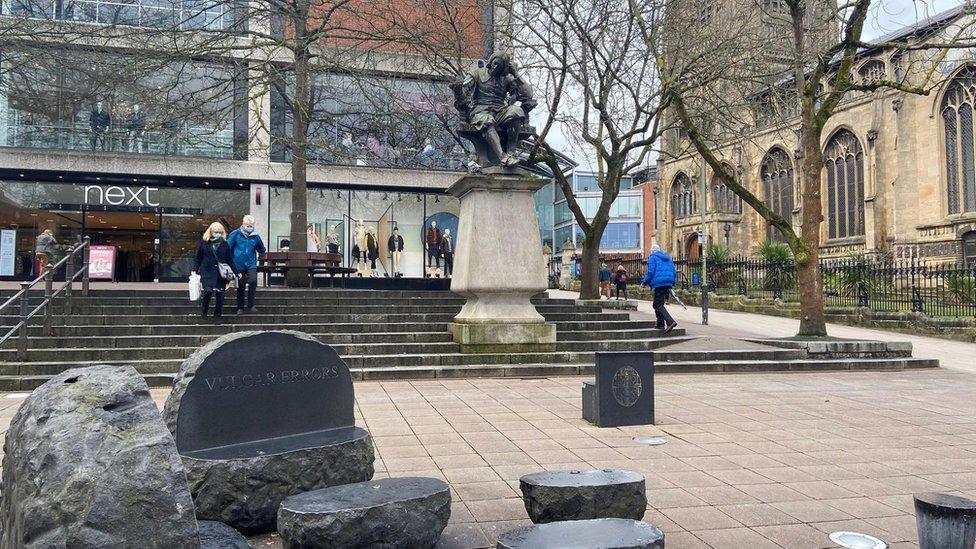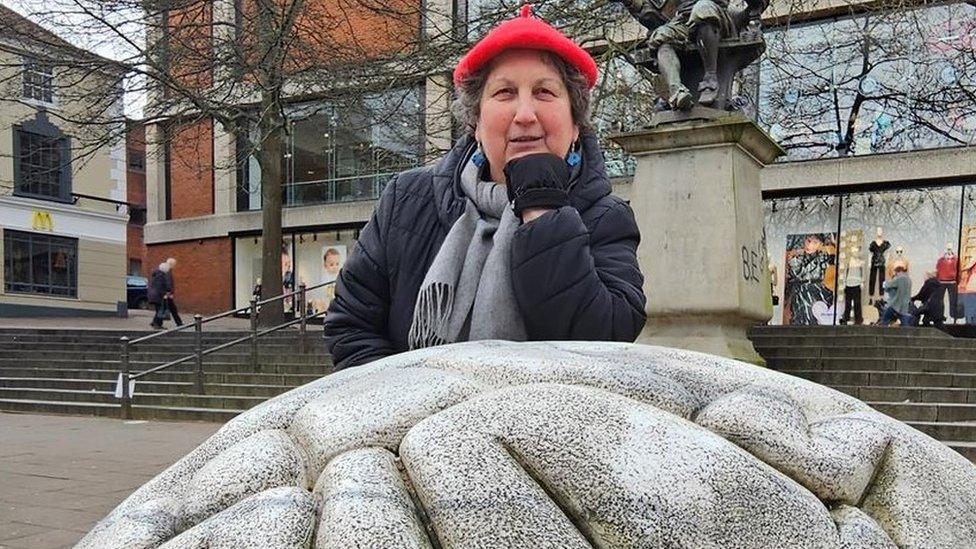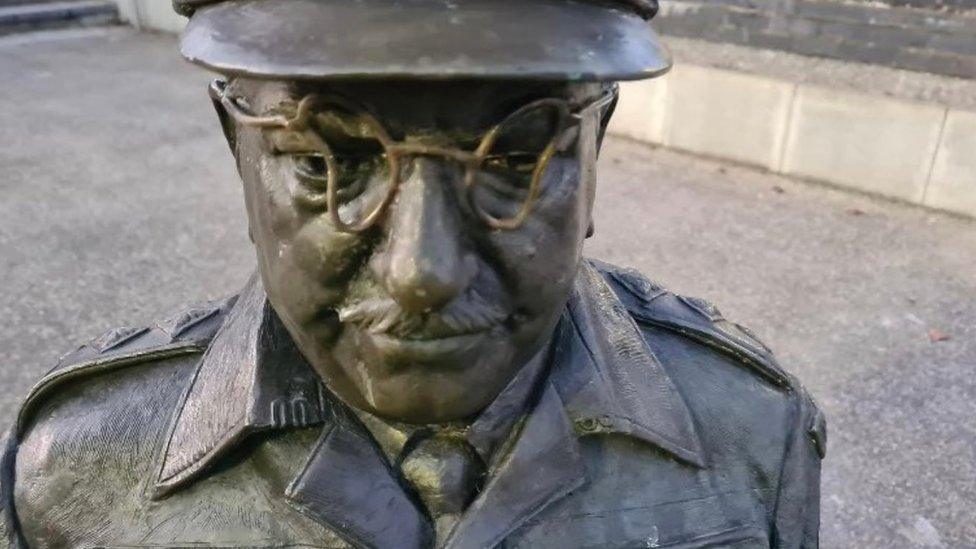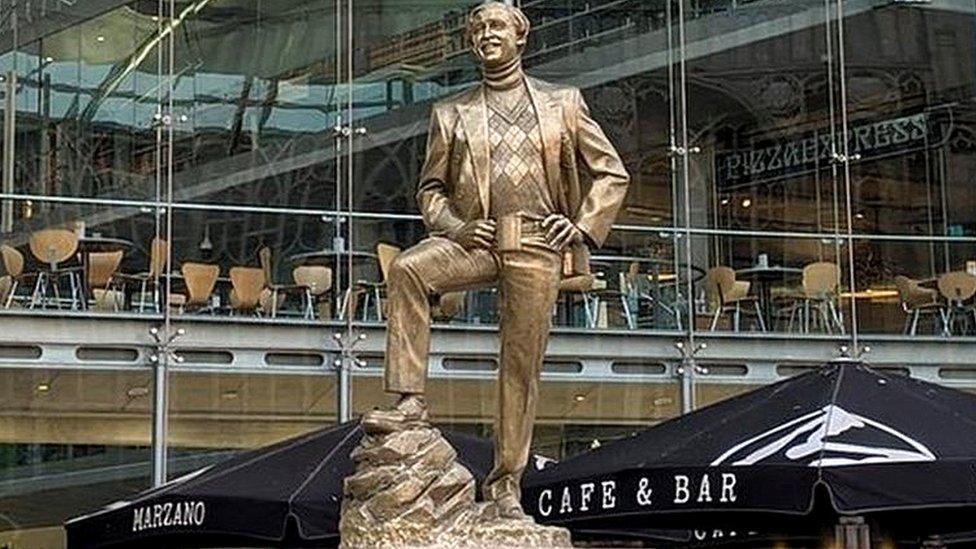Norwich: Brain sculpture and others still without a home
- Published

The sculptures have been removed by the city council to make the area more accessible and are supposed to be homed elsewhere in the city
Controversial city sculptures which were removed months ago are still without a permanent home, it has emerged.
The distinctive pieces in Hay Hill, Norwich, including one of an outsized brain, were removed as part of a £3.2m revamp.
Norwich City Council promised in March to find them a new home.
The area is being altered to make it more accessible and is expected to be completed in February 2024.
Made by renowned French sculptors Anne and Patrick Poirier, the works have been controversial since they were first proposed in 2007 with some people saying they did not understand them.
The carvings, which include inscriptions on blocks of marble, are called 'Homage To Sir Thomas Browne' and were designed to complement the nearby statue of the 17th Century physician, philosopher and writer.

The sculptures were used by people sitting and gathering together
The statue of Thomas Browne himself was returned to Hay Hill in August but a city council spokesman confirmed a new home for the other sculptures had not yet been identified.
He promised more details would be shared once a place for them was found, the Local Democracy Reporting Service said.
It was originally envisioned that the marble works, which also included an eye and seating, would be relocated to Elm Hill Gardens, but that idea was scrapped.

The city council wants to remove the sculptures to make the square more accessible
But they have proved controversial, with The Norwich Society, external among those calling for their removal.
Sir Thomas Browne was an English polymath, external and author who lived in Norwich from 1636 until his death in 1682.
Buried in nearby St Peter Mancroft, Browne's skull was removed when his lead coffin was accidentally opened by workmen in 1840.
It was not re-interred until 1922 when it was recorded in the burial register as aged 317 years.

This 1904 statue of Sir Thomas Browne will stay in Hay Hill but be moved to a less prominent area, as part of the council's plan

Find BBC News: East of England on Facebook, external, Instagram, external and Twitter, external. If you have a story suggestion email eastofenglandnews@bbc.co.uk, external
Related topics
- Published9 March 2023

- Published2 March 2023

- Published1 March 2022

- Published24 September 2020
